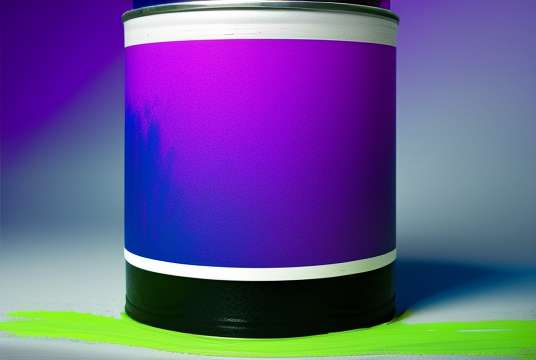Yoga has become increasingly popular in recent years as a way to achieve physical and mental wellness. It is an ancient practice that has been around for over 5,000 years, originating in India. It is a practice that focuses on the mind-body connection through various postures, breathing techniques, and meditation.
One of the benefits of yoga is that it is accessible to people of all ages and fitness levels. You don't need to be flexible or athletic to start practicing yoga. There are various types of yoga that cater to different needs and levels, so anyone can find a style that suits them.
Yoga can help reduce stress, promote relaxation, and improve overall physical health. It can also help you become more mindful, increase flexibility, and strengthen your muscles. It is an excellent way to improve your overall well-being, and it's a great addition to your daily routine.
Whether you're a beginner or an experienced yogi, there are always ways to enhance your practice. With the right mindset and dedication, anyone can find their zen through yoga. So grab a mat and get ready to explore the wonderful world of yoga!
The Benefits of Yoga for Mind and Body

Mind Benefits
Yoga has numerous benefits for the mind, making it a powerful stress management tool. Practicing yoga regularly can help an individual to:
- Reduce stress and anxiety levels.
- Increase focus and concentration.
- Enhance memory and cognitive function.
- Reduce symptoms of depression.
- Promote a sense of calm and inner peace.
Body Benefits
Yoga is also known for its physical benefits, as a low-impact exercise that can help improve flexibility, strength, and overall fitness.Other physical benefits of yoga include:
- Improved posture and alignment.
- Increased muscle tone and strength.
- Improved respiratory health.
- Reduced risk of injury.
- Reduced inflammation and pain.
Research has also shown yoga to be effective in managing a range of health conditions, including hypertension, diabetes, and chronic pain.
| Poses for Mind Benefits | Poses for Body Benefits |
|---|---|
|
|
Basic Yoga Poses for Beginners

Mountain Pose (Tadasana)
Stand tall with feet firmly planted on the ground and arms at your sides. Inhale deeply and raise your arms overhead, palms facing each other. Exhale and bring your arms back down to your sides. This pose helps with balance and aligns the body.
Child's Pose (Balasana)
Start on your hands and knees, with your wrists under your shoulders and knees under your hips. Take a deep breath in and as you exhale, lower your hips back towards your heels. Your arms should be extended in front of you and your forehead down on the ground. This pose is great for relaxation and releasing tension in the lower back and hips.
Downward Facing Dog (Adho Mukha Svanasana)
Begin on your hands and knees, with your wrists under your shoulders and knees under your hips. Inhale and lift your hips up, straightening your arms and legs, forming an inverted V shape with your body. Keep your heels on the ground and your head relaxed. This pose strengthens the arms and legs, and improves overall circulation.
Warrior Pose (Virabhadrasana)
Start standing, then step one foot back, turning it out to a 90 degree angle. Keep your front foot facing forward and bend the front knee, keeping it directly over your ankle. With arms extended, lift your chest and hold this position for several breaths. Repeat on the other side. This pose builds strength and confidence.
- Remember to breathe deeply and focus on your breath throughout each pose.
- Start slowly and take breaks as needed.
- Consult with a physician before beginning any new exercise routine, especially if you have any underlying health conditions.
These basic yoga poses provide a good starting point for those new to yoga. Remember to listen to your body and not push yourself too hard. With practice, these poses will become more comfortable and you can move on to more challenging poses. Namaste.
Choosing the Right Yoga Style for You
Understand the Different Styles
There are many different types of yoga styles, and it's important to understand what each one offers. Hatha yoga, for example, is focused on the physical postures and is great for beginners, while Vinyasa yoga is more fast-paced and emphasizes movement with breath. Restorative yoga is a slow-paced style that is great for relaxation and stress relief, while Bikram yoga is practiced in a heated room and is meant to promote detoxification.
Consider Your Goals
When choosing a yoga style, it's important to consider what goals you have for your practice. If your goal is to build strength and flexibility, you may want to consider a more intense style like Ashtanga yoga. If you're looking for a more meditative experience, Yin yoga may be a better fit. And if stress relief and relaxation are your top priorities, Restorative yoga may be the way to go.
Try Different Styles
The best way to find the right yoga style for you is to try out different styles and see which ones feel the best. Many yoga studios offer introductory classes or trial periods, which can give you the opportunity to try out different styles. In addition, there are many online classes and resources available that allow you to try out different styles from the comfort of your own home.
- Understand the different styles of yoga
- Consider your goals for your practice
- Try out different styles to find the right fit
Yoga Equipment: What You Need to Get Started
1. Yoga Mat
A high-quality yoga mat is essential for any yoga practice. It provides a non-slip surface and cushions your joints during poses. Look for a mat that is at least 6mm thick, and choose a material that suits your preferences, such as natural rubber, PVC or TPE.
2. Yoga Blocks
Yoga blocks are great props for beginners and advanced yogis alike. They help support your body and maintain proper alignment during poses. Look for blocks made of dense foam or cork, which are sturdy and provide good grip.
3. Yoga Strap
A yoga strap can help you deepen your stretches and improve flexibility. It's particularly useful for poses that require you to reach your toes or grasp your ankles. Look for a strap with a buckle or D-ring to easily adjust the length, and choose a material that is durable and comfortable against your skin.
4. Yoga Bolster
A yoga bolster is a supportive cushion that can be used for relaxation and restorative poses. It helps you relax deeply and achieve a greater sense of calm. Look for a bolster with a removable cover that is washable, and choose a material that is firm but comfortable.
5. Yoga Clothes
Wearing comfortable and breathable clothes is important for a successful yoga practice. Look for clothing made of stretchy and moisture-wicking materials, such as spandex or bamboo. Avoid clothes that are too baggy or restrictive, as this can hinder your movements.
6. Yoga Mat Cleaner
Keeping your yoga mat clean is important for hygiene and prolonging its lifespan. Use a yoga mat cleaner to remove sweat, dirt, and bacteria after each practice. Look for a cleaner that is natural and free from harsh chemicals.
By investing in these essential yoga props, you can enhance your yoga practice and get the most out of each session. Remember to choose high-quality equipment that is comfortable, durable, and suits your personal preferences. Namaste!
Incorporating Yoga into Your Daily Routine
Start Small
If you're new to yoga, it's important to start small. You don't want to push yourself into postures you're not ready for and risk injury. Begin with simple poses such as Mountain Pose and Downward-Facing Dog and slowly work your way up to more advanced poses.
Set Aside Time
Make yoga a priority by scheduling it into your daily routine. Set aside a specific time each day to practice, whether it's in the morning before work or in the evening before bed. By making it a habit, it will become easier to stick to and you'll start to see the benefits in no time.
Use Online Videos
If you can't make it to a yoga studio, there are plenty of online resources available. YouTube is a great place to find free yoga videos that you can follow along with at home. Make sure to find a video that meets your skill level and goals.
Create a Serene Space
Having a quiet and calming space to practice yoga can increase your focus and help you relax. Find a spot in your home that's free from distractions and decorate it with candles, incense, and other items that promote relaxation.
Find a Yoga Buddy
Practicing yoga with a friend can be a fun and motivating way to incorporate it into your daily routine. Find a friend who is also interested in yoga and create a schedule that works for both of you. Not only will you have someone to hold you accountable, but you'll also be able to encourage each other's progress.
- Remember to listen to your body and take breaks when needed.
- Don't forget to breathe deeply throughout each pose.
- Be patient with yourself and celebrate small victories along the way.









